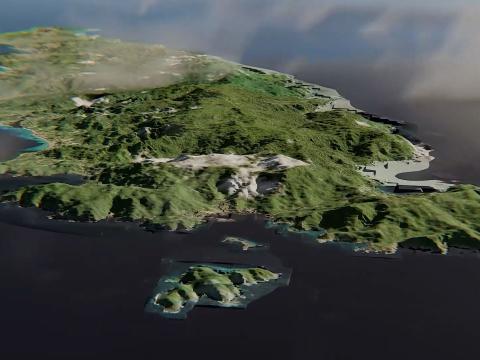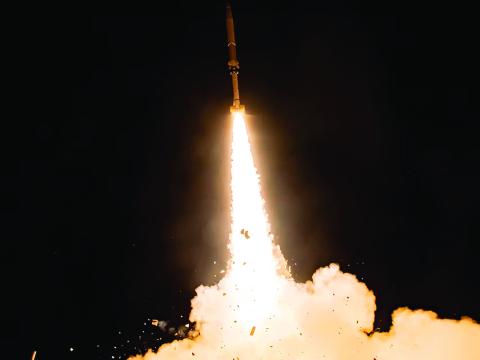NGA Tabs 10 MagQuest Winners
Magnetometer locations ranging from on the bottom of the sea to orbiting in space constitute the first round winners of the National Geospatial-Intelligence Agency's (NGA's) MagQuest open innovation challenge. Designed to generate novel ways of measuring Earth’s magnetic field, MagQuest is offering prizes totaling $1.2 million for novel geomagnetic data collection methodologies.
The NGA is seeking better measurement of the Earth’s magnetic field, as the field is constantly changing and its precision is essential for navigation and location. These proposed solutions offer more precise or constant measurements to supplant or replace sporadic readings.
The winning technologies for phase 1 include a network of automated magnetic observatories on land and on the sea floor; floating magnetometers; sensors piggybacking on satellite launchers; magnetometers affixed to commercial airplanes; and constellations of cubesats, nanosatellites and picosatellites. Each of the 10 winners receive a prize of $20,000.
The 10 phase 1 winners are:
•Terrestrial and Seafloor Automated Magnetic Observatories: The Royal Meteorological Institute of Belgium proposes an international network of automated magnetic observatories on land and the seafloor. The observatories could be deployed at almost any global location; automation could deliver continuous data while decreasing staffing and support needs.
•Oceanic Observations From Autonomous Profiling Floats: From the University of Washington Applied Physics Laboratory with Oregon State University, this effort would add magnetometers to existing autonomous ocean platforms. Sensors could be deployed at scale, yielding continuous sea surface and subsurface magnetic field data.
•Diamonds in the Sky—Vector Magnetometry for Space and Airborne Platforms: SB Technologies Inc. offers diamond magnetometer technology integrated into a network of cubesats and commercial airplanes. The compact technology would decrease cost and improve integration across platforms.
•Equatorial Ground Observations and Scalar Satellite Mission: The Helmholtz Centre Potsdam GFZ German Research Centre for Geosciences proposes placing permanent geomagnetic ground stations at the equator paired with a scalar satellite mission. By defining the exact location of the magnetic equator, the necessary data could be collected with a satellite mission of decreased cost and complexity.
•Global Acquisition of Magnetic Measurements at Altitude (GAMMA) Stellar Solutions suggests adding magnetometers as hosted payloads to planned satellite launches with optional integration of ground-based sensors. The combination of spaceborne and terrestrial data could increase coverage and decrease risk.
•MagSAT—Magnetic Field Mapping NanoSat Constellation: Hypergiant offers a constellation of nanosatellites with self-calibrating, solid-state magnetometers. The proposed magnetometer could decrease cost and complexity while not being affected by the same environmental conditions as a traditional magnetometer.
•EOI Pathfinder With Magnetometry Suite: Earth Observant Inc. suggests adding a magnetometry payload to the planned Pathfinder satellite mission. This solution would capture magnetic data during the primary mission’s downtime.
•Distributed Network of Microsensors Onboard Picosatellites: Pumpkin offers having a swarm of picosatellites in low earth orbit mapping the magnetic field. This solution would keep costs low by minimizing the required functionality, mass and volume of each individual satellite.
•Compact Spaceborne Magnetic Observatory (COSMO) Cubesat: University of Colorado Boulder suggests a cubesat solution specifically designed and tested for magnetic cleanliness and accurate data from a compact form factor. A compact, scalar-vector magnetometer and a novel deployable boom enable high-quality data to be collected from a cubesat.
•Cubesat-powered Geomagnetic Data Collection: Spire Global proposes a global constellation of 75 cubesats carrying custom magnetometer payloads. This system could leverage Spire’s existing infrastructure for satellites, ground stations and data processing.
The competition now enters phase 2, which focuses on data collection methodologies, including a concept of operations and program management. These 10 winners, along with contestants that did not participate in phase 1, are eligible for phase 2 prizes. All contestants must submit their entries by 4:59 EDT on August 28. The remainder of the prize pool, $1 million, will be distributed among five phase 2 winners. The NGA may decide to add further challenges after phase 2 that would award an additional $2.5 million in cash prizes, the intelligence agency offers.





Comments